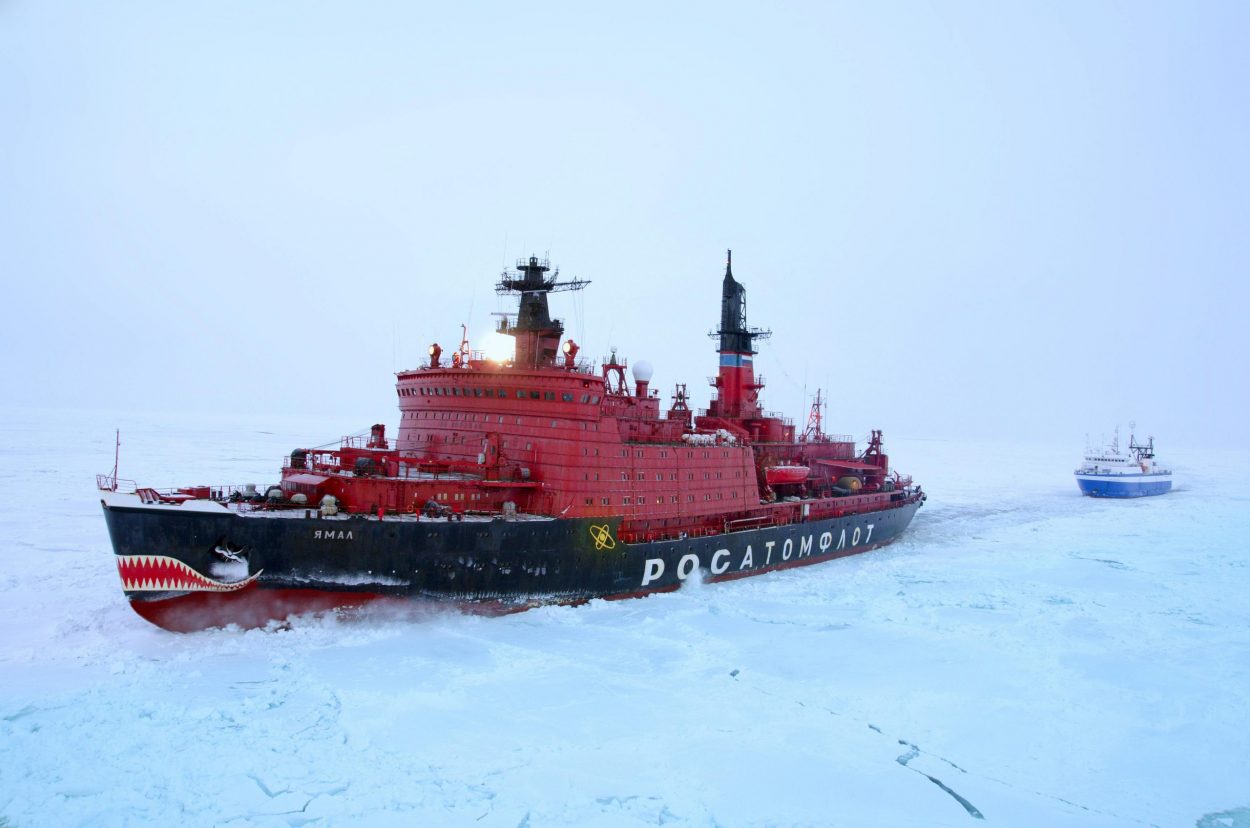Four shipyards, from the United States, Canada, and Finland, have quietly come together in a new shipbuilding alliance, aiming to deliver the US Coast Guard’s Arctic Security Cutter (ASC) within the next three years.
For a region as remote and unforgiving as the Arctic, this collaboration marks a practical step toward recurring long-term US maritime presence.
At the center of this initiative is ‘Bollinger Shipyards’, a US-based firm leading the joint effort. Working alongside them are ‘Seaspan Shipyards’ from Canada, ‘Rauma Shipyards’ from Finland, and Aker Arctic, a Finnish engineering and design company based in Helsinki.
Each brings a different strength to the table: engineering experience, cold weather design expertise, and a strong understanding of operational needs in polar environments.
The alliance is framed within the ICE Pact, a trilateral cooperation agreement between the US, Canada, and Finland focused on Arctic development and maritime readiness.
Rather than starting from scratch, the approach here is to combine what already works, i.e., Proven designs, seasoned teams, and facilities capable of building ships that can hold up in some of the world’s harshest conditions.
The planned Arctic Security Cutter is a medium-class icebreaker meant to operate alongside the US Coast Guard’s upcoming Polar Security Cutters.
Together, these vessels would form a two-tiered fleet that can respond to a range of missions, from search and rescue to law enforcement and defense across the Arctic region.
When Washington gave the green signal to the first Polar Security Cutter late last year, it signaled more than just a budget allocation. It showed that Arctic priorities were starting to move off the drawing board and into production.
What Does The US Have In The Arctic?
Right now, the US Coast Guard’s ability to operate in the polar regions rests on just two main vessels.
One is the Polar Star, a heavy icebreaker that’s been in service since 1976. At nearly 50 years old, it’s still doing the job, but maintenance is a constant challenge.
The other is the Healy, a medium icebreaker commissioned in 1999. Though more modern, it is primarily designed for scientific missions rather than heavy-duty icebreaking.
Together, these two ships form the backbone of the US polar fleet, but that backbone is ageing and thin, especially compared to those of other countries.
In a move to boost its limited capacity, the Coast Guard recently took a practical step by acquiring a commercially available polar ice breaker. This vessel, sourced through a contract with Offshore Service Vessels, won’t replace either of the existing cutters but will add some much-needed flexibility and presence in the Arctic.
It’s a short-term solution, aimed at keeping the US in the game while longer-term plans like the Arctic Security Cutter and the Polar Security Cutter programs take shape.
The next generation of icebreakers, the Polar Security Cutter program, is still years away from delivery, as shown by design issues and cost overruns.
In simple terms, what the US has is modest. But the growing attention to the Arctic suggests that more support is on the way.
‘Seaspan Aker Multi Purpose Icebreaker’
That’s where this four-shipyard partnership becomes important. The team has proposed a vessel called the ‘Seaspan Aker Multi Purpose Icebreaker’ that they say is ready for construction.
The design, developed by Seaspan and Aker Arctic, is capable of breaking through four feet of ice, travelling 12000 nautical miles, and staying operational for over 60 days.
It’s tailored to meet the Coast Guard’s statutory missions and function reliably in the most difficult environments.
Ben Bordelon, President and CEO of Bollinger Shipyards, emphasized that this isn’t just a plan on paper. “We’re ready to build”, he said. “This is about speed, certainty, and delivering results. We’re not making projections, we’re offering a real, construction-ready solution.”
Rauma Shipyards brings more than just shipbuilding expertise. According to its CEO, Mika Nieminen, the Finnish shipyard is also ready to support the US effort with crew training, bridge simulators, and ice trails elements that help operators become mission-ready faster and safer.
John McCarthy, CEO of Seaspan Shipyards, sees this partnership as more than a contract. For him, it’s about strengthening ties with a long-time ally. “Collaborating with Bollinger, Rauma, and Aker Arctic gives us a chance to contribute real value to a shared interest in security and capability in the Arctic.”
The vessel’s design also shares common elements with icebreakers planned for the Canadian Coast Guard. This means the ships could benefit from shared logistics, training, and maintenance systems, making them easier to operate together during joint missions. If delivered as proposed, this class of icebreakers would become the largest of its kind in the world.
Bollinger and Seaspan already have ongoing contracts to build icebreakers for their respective nations, while Rauma and Aker Arctic are well known for their extensive work on cold climate vessels. This isn’t a new experiment for any of them; it’s a continuation of work they’ve already been doing, now adapted to fit US needs.
Earlier this year, the US Coast Guard issued a request for information, seeking input on how to fast-track the development of a new class of Arctic-capable ships. The proposal from this partnership directly responds to that call, offering a 33-month timeline from contract award to delivery, a marked contrast to traditional programs that often face long delays.

Why Does The US Need An Arctic Security Cutter?
The Arctic is no longer the untouched frontier it once was. Melting sea ice is opening up new maritime routes, and global interest in the region’s resources is growing. For the US, that means more than just scientific research; it means national security, economic opportunity, and geopolitical positioning.
There are eight Arctic nations formally recognized under the Arctic Council: The US, Canada, Denmark, Finland, Iceland, Norway, Sweden, and Russia.
Their rights in the region are defined by the United Nations Convention on the Law of the Sea (UNCLOS,) which outlines territorial claims and exclusive economic zones. While the borders are mostly settled, physical presence still carries weight.
China, while not an Arctic state under UNCLOS, declared itself a ‘Near Arctic State’ in 2014 and has steadily increased its involvement. Under President Xi Jinping, becoming a ‘Polar Power’ is now a national priority.
Beijing has partnered with Russia to advance the Polar Silk Road, an Arctic extension of China’s Belt and Road Initiative (BRI) focused on building trade corridors and tapping into natural resources.
Russia, meanwhile, claims control over the Northern Sea Route and maintains a robust icebreaker fleet, including nuclear-powered vessels. This gives Moscow a practical advantage in shaping future Arctic navigation and operations. By comparison, the US lacks both the ships and the influence to assert a similar presence.
The implications go beyond national pride. The Arctic holds substantial economic potential, particularly around Alaska. If the US aims to expand shipping, explore energy reserves, or build out infrastructure, it will need both government-backed and commercial ice-capable vessels to make it happen. The Arctic Security Cutter could serve as a key enabler for that broader vision.
Recent geopolitical shifts have also changed the strategic landscape. With Finland and Sweden joining NATO in 2023 and 2024, all Arctic nations except Russia are now aligned under the NATO framework.
This gives the alliance, and by extension the US, a stronger position to coordinate activities and counterbalance growing Russia-China cooperation in the region.
Climate change is only speeding things up. By the 2030s, large portions of the Arctic may be ice-free in the summer, opening up routes that significantly cut travel time between Asia, Europe, and North America. The ability to operate in these waters will shape not only military strategies but also future trade dynamics.
Recognizing this, the US has turned to partnerships. The ICE Pact with Canada and Finland aims to leverage existing expertise, particularly from Finland, which has played a major role in designing most of the world’s modern icebreakers. Rather than trying to build up capabilities from scratch, the US is looking to accelerate progress by working with experienced partners.
The Arctic Security Cutter won’t solve every challenge in the region, but it’s a solid step forward. The Arctic isn’t just about future threats or long-term planning; it’s about what needs to be done now to maintain presence, protect interests, and prepare for what’s coming next.
Without ships that can reliably operate in the Arctic throughout the year, the US will continue to lag behind. But with efforts like this four-way shipbuilding partnership, there’s a real chance to close that gap through vessels that are ready to get work.
- Shubhangi Palve is a defense and aerospace journalist. Before joining the EurAsian Times, she worked for ET Prime. She has over 15 years of extensive experience in the media industry, spanning print, electronic, and online domains.
- Contact the author at shubhapalve (at) gmail.com




